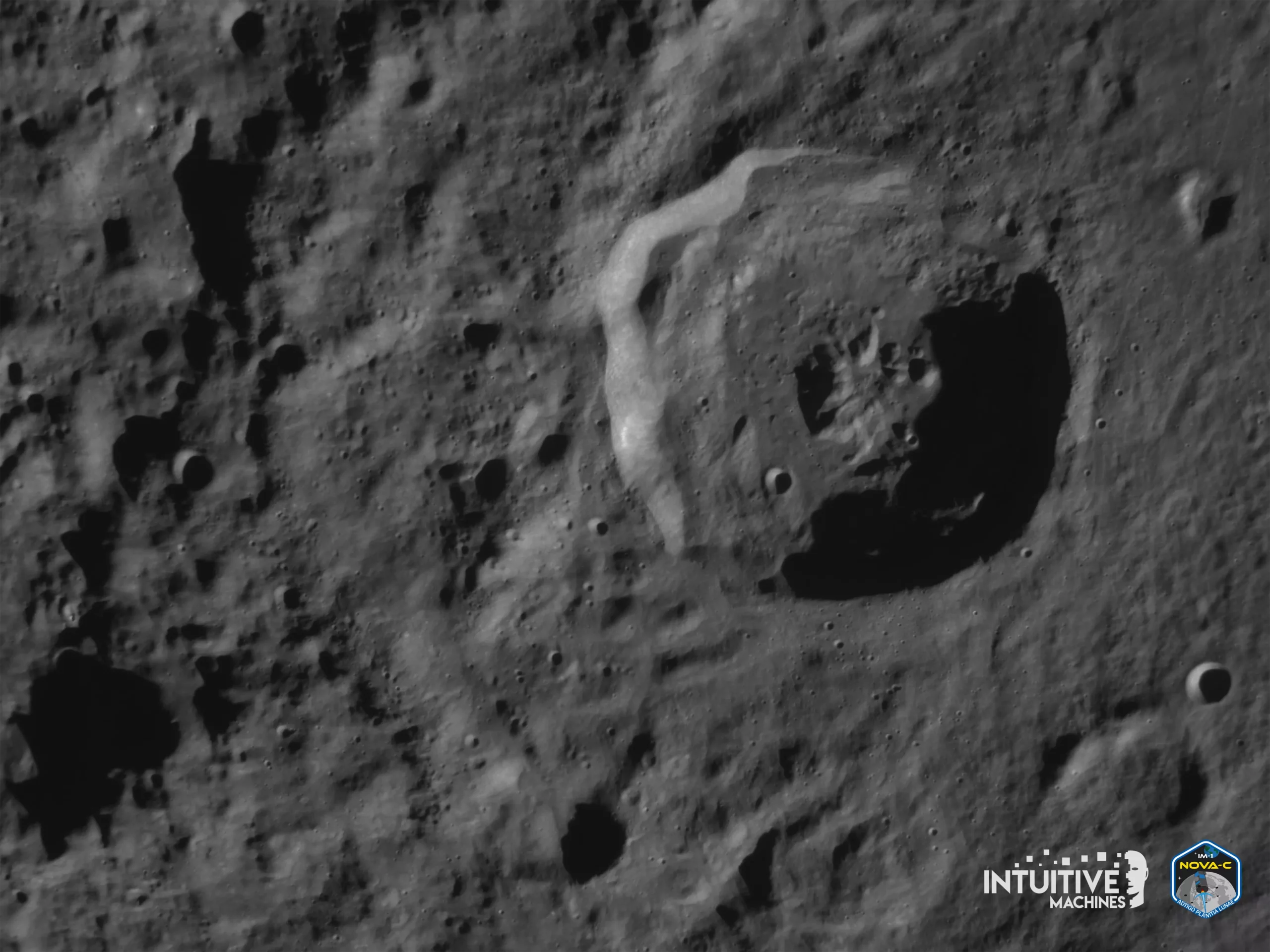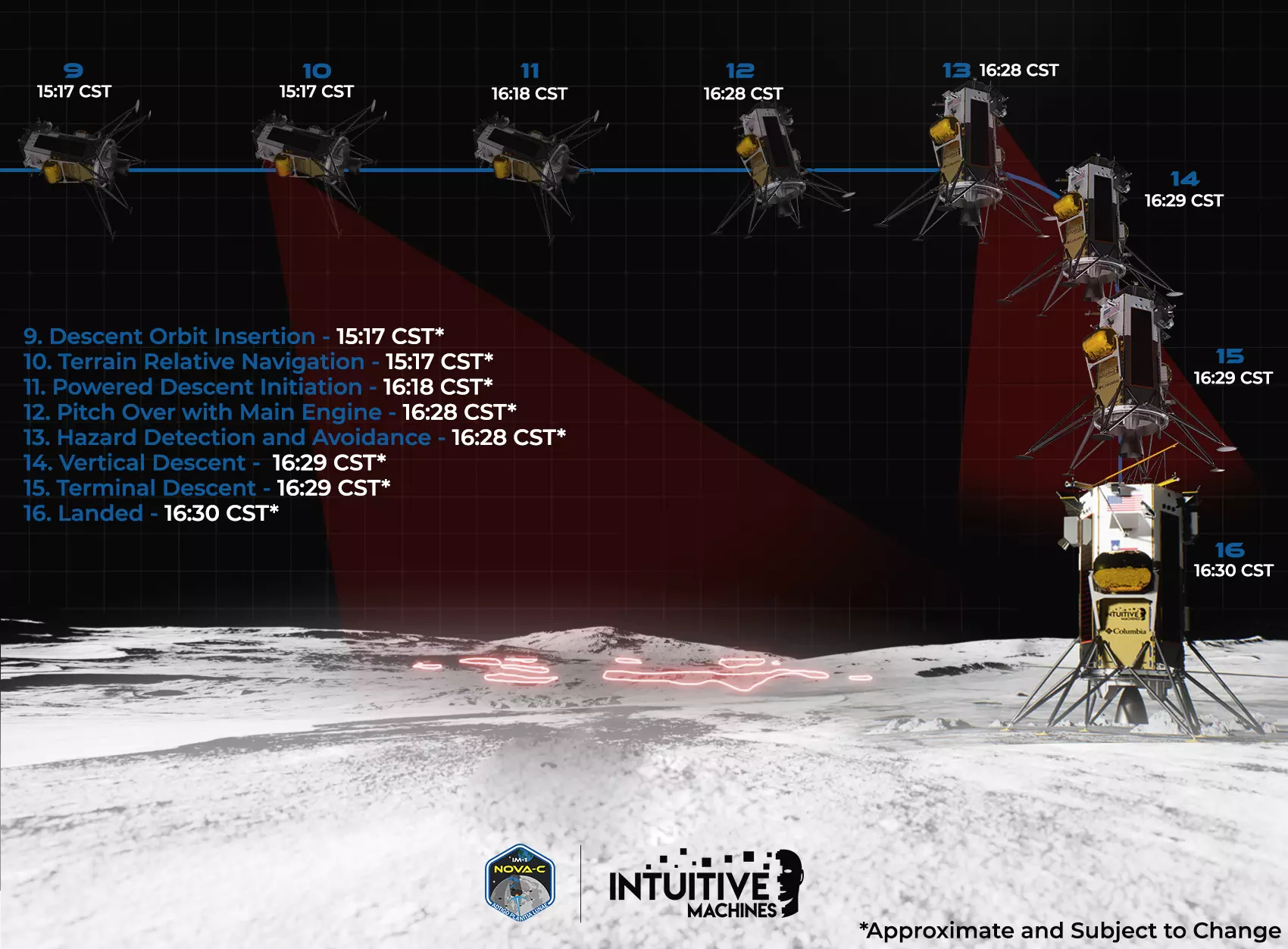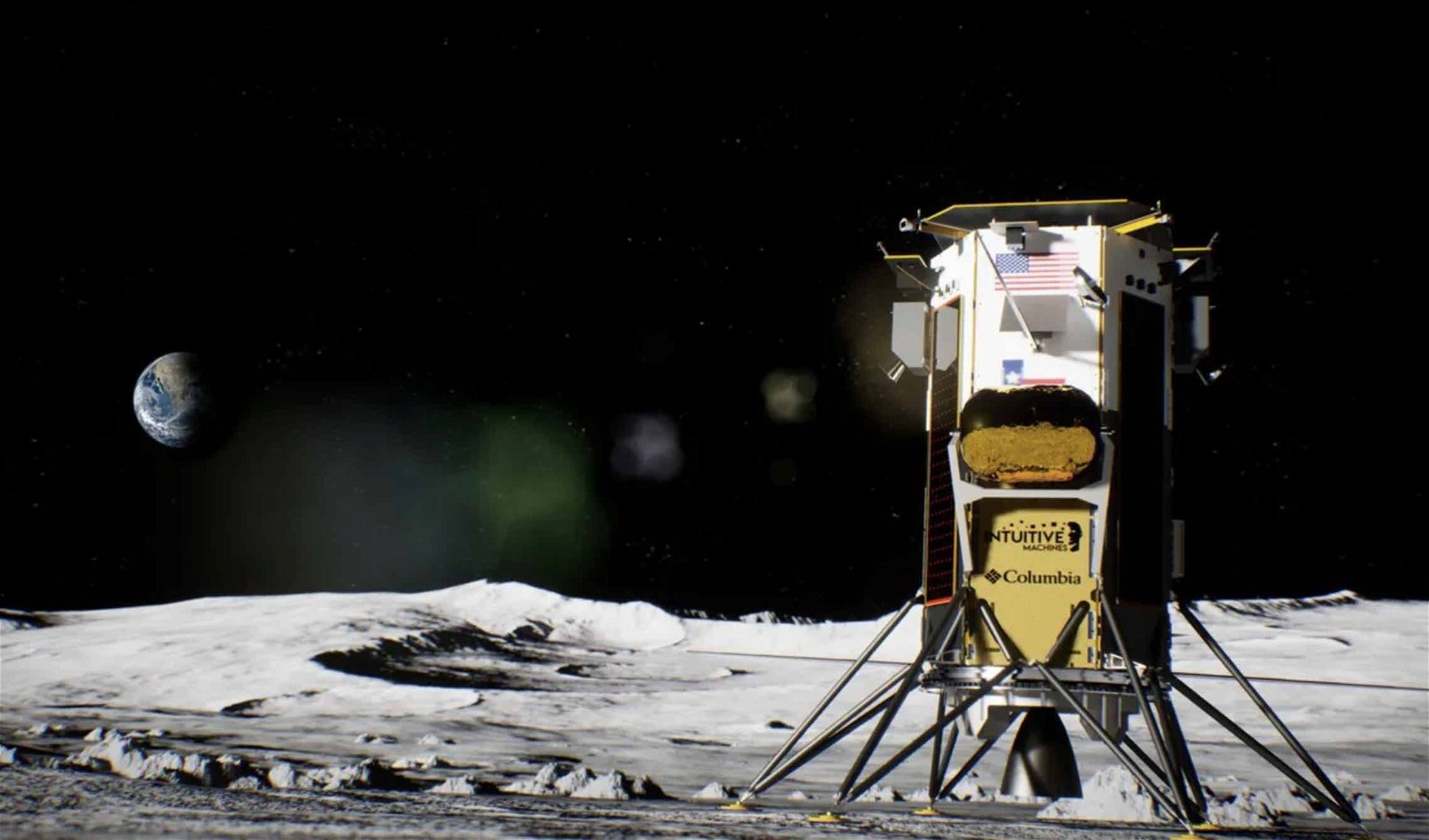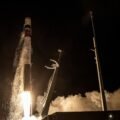In a venture blending government ambition with private innovation, the Houston-based Intuitive Machines, in partnership with NASA, is poised to make history by attempting the first moon landing of a commercial spacecraft with its IM-1 Odysseus lunar lander.
The event will signify the first time in more than 50 years that an American spacecraft will land on the moon’s surface. The last U.S. spacecraft to perform a soft landing on the moon was NASA’s crewed Apollo 17 mission in 1972.
At around 11 am EST on February 21, Intuitive Machines announced that Odysseus had already completed its scheduled 408-second main engine insertion burn, successfully entering a 57-mile circular orbit above the moon.
“After traveling over 1,000,000 km [621,371 miles], Odysseus is now closer to the Moon than the end-to-end distance driving across Space City, Houston, TX,” Intuitive Machines said on its website. “Odysseus continues to be in excellent health.”
Several hours after announcing entry into moon orbit, the space firm shared a black-and-white image of the Bel’kovich K crater in the moon’s northern equatorial highlands, captured by Odysseus’ Terrain Relative Navigation camera.


The IM-1 Odysseus began its journey on February 15 aboard a SpaceX Falcon 9 rocket. After 7 days and traveling nearly 238,855 miles, the spacecraft is scheduled to start its descent orbit insertion at around 4:17 pm EST before attempting a soft landing on the moon’s surface around 5:30 pm EST.
Odysseus’ final destination will be near a crater known as Malapert A, located roughly 186 miles from the moon’s south pole. The chosen landing site is expected to offer valuable insights for future moon missions.
NASA’s collaboration with Intuitive Machines is part of its Commercial Lunar Payload Services (CLPS) initiative, which is aimed at leveraging private American companies to deliver science and technology payloads to the moon. CLPS is a critical component of NASA’s ambitious Artemis program.
Under its Artemis program, NASA intends to reestablish a human presence on the moon, including plans to send astronauts to the lunar surface sometime in 2026. The space agency also aims to build a permanent base camp on the moon that could house astronauts and scientific equipment and serve as a mid-way jump-off point for future crewed missions to Mars.
“We’re going back to the Moon for scientific discovery, economic benefits, and inspiration for a new generation of explorers: the Artemis Generation,” reads an excerpt on NASA’s website. “We will collaborate with commercial and international partners and establish the first long-term presence on the moon. Then, we will use what we learn on and around the moon to take the next giant leap: sending the first astronauts to Mars.”
The significance of a successful landing by Odysseus would signal a major shift in how future space missions are conducted, with private companies playing an increasingly central role.
Today’s attempted landing comes a little over a month after Pittsburgh-based Astrobotic Technology made a failed attempt to reach the lunar surface with its Peregrine lander, highlighting the challenges of lunar exploration.
Shortly after taking off atop a United Launch Alliance Vulcan launch vehicle on January 8, Astrobotic Technology officials announced that a ruptured fuel tank and propellant leak would prevent the Peregrine from completing its mission to land on the moon’s surface. After 10 days in space, the lander was directed back into Earth’s atmosphere, where it eventually burned up over the Pacific Ocean on January 18.
Though the Odysseus lander has made it much further than its rival, Astrobotic Technology, Intuitive Machines officials noted that today’s “landing opportunity will be Odysseus’ hardest challenge yet.”
During the final descent, Odysseus will deploy its “EagleCam” to capture unprecedented views of the lunar surface. The lander will also use Terrain Relative Navigation cameras and lasers to navigate its approach. Throttled engine fires will continuously slow the spacecraft’s fall from its initial pace of nearly 4,000 miles per hour. If all goes well, the lander will eventually slow to 2 mph for a smooth touchdown on the lunar surface.


As for its payloads, Odysseus is carrying six NASA science instruments, including a Laser Retro-Reflector Array (LRA) designed to serve as a guidepost for future landers and a Lunar Node 1 Navigation Demonstrator that could be used to navigate future autonomous spacecraft landings.
According to Intuitive Machines’ press kit, the lander also carries several commercial payloads, including a package by Columbia Sportswear to test its “Omni-Heat Infinity” clothing technology and 125 miniature stainless steel moon Phase sculptures designed by American artist Jeff Koons.
One of the more unique private payloads on the Odysseus lunar lander is 77,000 nanotechnology devices known as “Lunagrams,” similar in appearance to a DVD.
These devices are part of the “Lunaprise mission” conducted by Galactic Legacy Labs, Space Blue, and the Arch Mission Foundation. The aim is to create “an indestructible time capsule to preserve humanity’s cultural heritage and knowledge” on the moon.
“This innovative archive, capable of enduring a billion years, is a testament to our civilization’s legacy, ensuring that the essence of human achievement and wisdom is safeguarded against the ravages of time and space, etching our story indelibly on the moon’s surface,” a fact sheet on Galactic Legacy Labs’ website reads.
The public can watch today’s historic attempted landing by the IM-1 Odysseus, beginning at 4:00 pm EST via NASA’s YouTube channel, NASA TV, NASA+ streaming service, and the NASA app.
Tim McMillan is a retired law enforcement executive, investigative reporter, and co-founder of The Debrief. His writing typically focuses on defense, national security, the Intelligence Community, and topics related to psychology. You can follow Tim on Twitter: @LtTimMcMillan. Tim can be reached by email: tim@thedebrief.org or through encrypted email: LtTimMcMillan@protonmail.com

